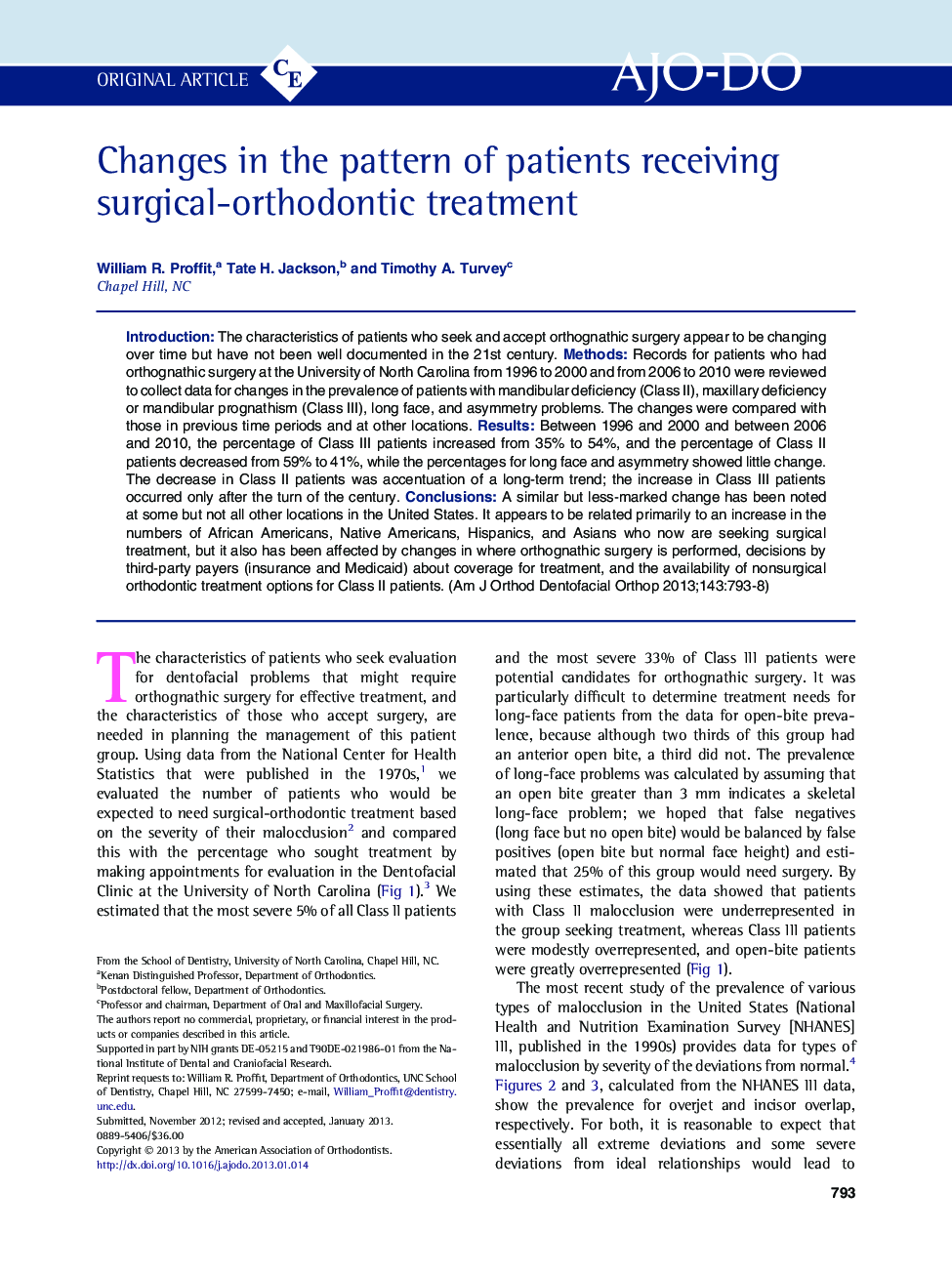| Article ID | Journal | Published Year | Pages | File Type |
|---|---|---|---|---|
| 3116874 | American Journal of Orthodontics and Dentofacial Orthopedics | 2013 | 6 Pages |
IntroductionThe characteristics of patients who seek and accept orthognathic surgery appear to be changing over time but have not been well documented in the 21st century.MethodsRecords for patients who had orthognathic surgery at the University of North Carolina from 1996 to 2000 and from 2006 to 2010 were reviewed to collect data for changes in the prevalence of patients with mandibular deficiency (Class II), maxillary deficiency or mandibular prognathism (Class III), long face, and asymmetry problems. The changes were compared with those in previous time periods and at other locations.ResultsBetween 1996 and 2000 and between 2006 and 2010, the percentage of Class III patients increased from 35% to 54%, and the percentage of Class II patients decreased from 59% to 41%, while the percentages for long face and asymmetry showed little change. The decrease in Class II patients was accentuation of a long-term trend; the increase in Class III patients occurred only after the turn of the century.ConclusionsA similar but less-marked change has been noted at some but not all other locations in the United States. It appears to be related primarily to an increase in the numbers of African Americans, Native Americans, Hispanics, and Asians who now are seeking surgical treatment, but it also has been affected by changes in where orthognathic surgery is performed, decisions by third-party payers (insurance and Medicaid) about coverage for treatment, and the availability of nonsurgical orthodontic treatment options for Class II patients.
